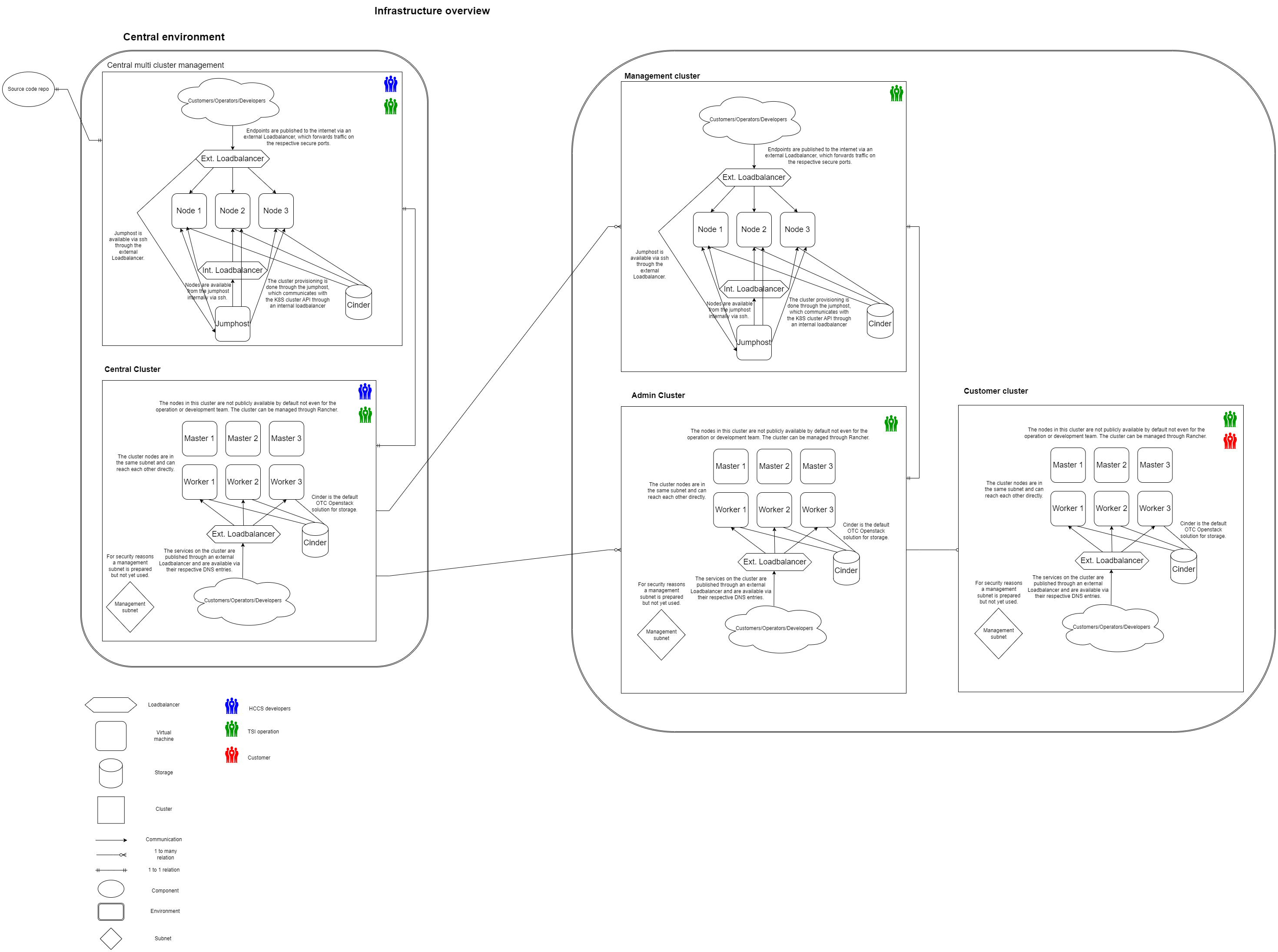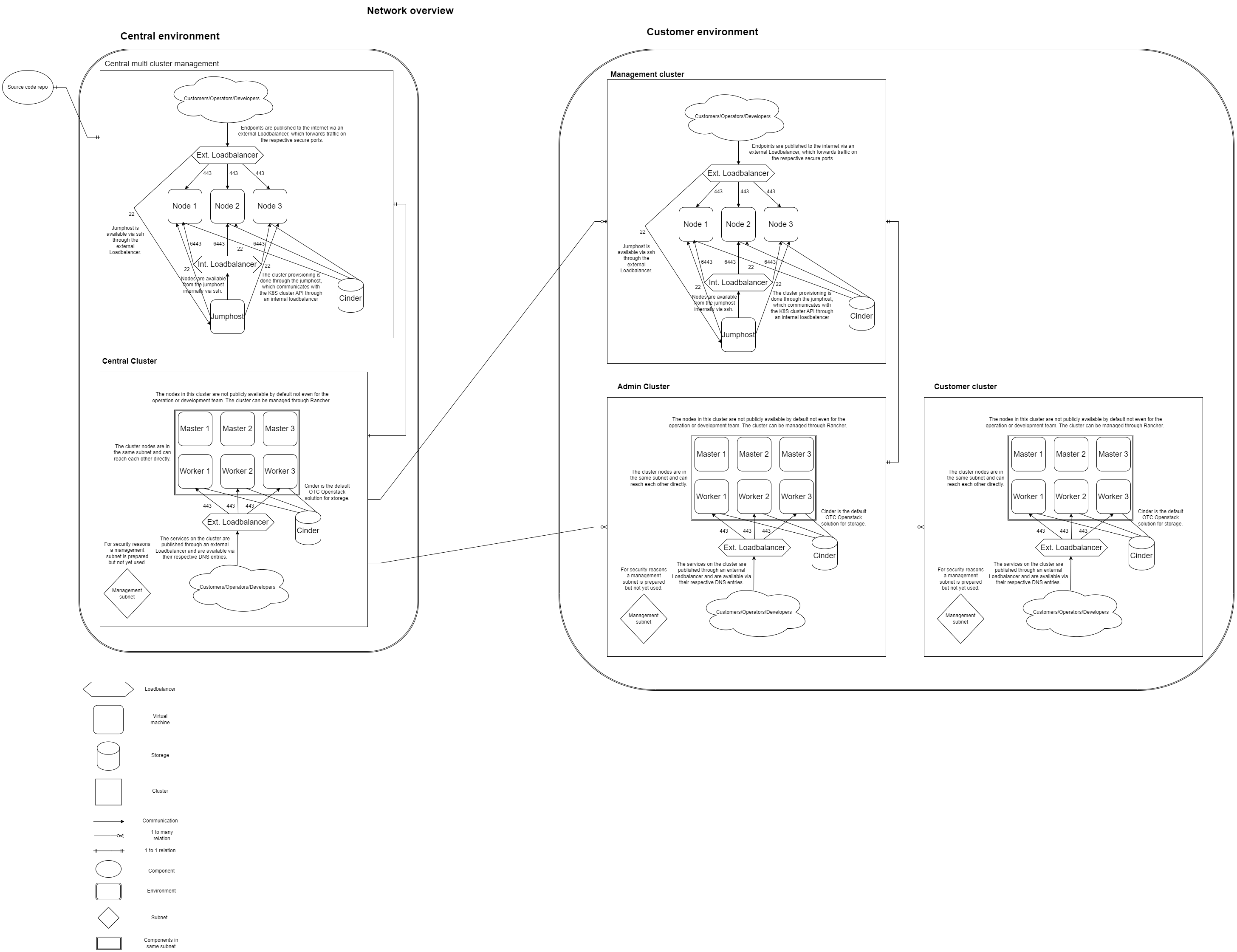Architecture Overview
HCCS is a platform agnostic solution that workloads across multiple clouds, private or public. (e.g. Open Telekom Cloud). It is security approved by Telekom/T-Systems Security.
Usage patterns:
Dedicated HCCS Infrastructure Delivery models:
Managed - T-Systems manages HCCS infrastructure as well as containerized apps for the customer. In this mode, customers can be managed with a dedicated or with a shared Rancher.
Self-managed - T-Systems manages HCCS infrastructure, the customer manages his Kubernetes cluster or container application.



Big Picture HCCS
A Rancher cluster manages one or more Kubernetes clusters. Rancher is deployed in containers and hosted on Kubernetes as well.
The Rancher cluster always consists of three nodes. A Kubernetes cluster always consists of three master nodes and a minimum of two worker nodes. The worker nodes can be scaled out according each customers workload.
An external load balancer manages incoming network traffic upfront each cluster, either Rancher or Kubernetes. Nginx ingress controllers mark the entry gate for network traffic ingressing the clusters.
With Docker as the container runtime engine, T-Systems managed Docker images are pulled from a private Registry Harbor.The T-Systems managed applications are packaged as Helm charts. These are also stored in the Harbor.
With containers being stateless, all data that has to be persisted on volumes that are dynamically provisioned from external storage . Currently Openstach Cinder are part of the HCCS Storage Solution.
Clusters
-
Rancher Cluster
Rancher is a comprehensive container management platform for Kubernetes. It offers a centralized management for day by day administrative activities like:
Creating new or importing existing Kubernetes clusters
Role based access control
Logging
Alerting -
Kubernetes Cluster
Kubernetes as container orchestration engine integrates a multitude of containers to launch enterprise grade, large scale, self-healing applications. One Rancher can manage multiple Kubernetes clusters. Each Kubernetes cluster has a minimal setup of three master nodes (controlplane, etcd) and 3 worker nodes.
Worker nodes can be scaled out seamlessly. Each worker node also hosts an Nginx ingress controller that terminates SSL traffic.